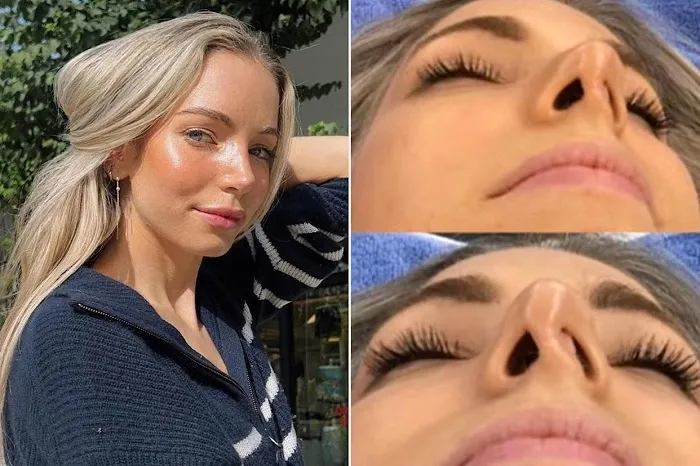Isabelle Lux, a 33-year-old content creator known on TikTok for her beauty and lifestyle insights, underwent a medically necessary septoplasty in 2014 to correct a deviated septum. Though the surgery—covered by insurance—was intended to restore normal breathing, Lux also requested a minor cosmetic tweak at no extra cost. The result, she says, was a nasal collapse that left her with one nostril fully closed and a dramatically altered appearance.
From Straightforward Surgery to Collapsed Nostril
Until age 21, Lux breathed fully through only one nostril. Doctors diagnosed her with a deviated internal septum and recommended septoplasty. “I never thought about changing how my nose looked,” Lux told People. But, learning that insurance would cover the procedure, she casually asked surgeons to make her nose look “cuter.”
After the septoplasty, Lux initially noticed no visible change. Over the following year, however, one side of her nose gradually collapsed, leaving her unable to breathe properly and with a severely compressed nostril. “It looked like Voldemort’s nose,” she said.
Costly Rhinoplasty to Repair Failed Results
Faced with ongoing breathing problems and an appearance she found distressing, Lux sought corrective surgery. Over the next several years, she spent roughly $26,000 on a full rhinoplasty. Although the operation restored her breathing and reshaped her nose, she lamented losing the natural look she originally loved.
“At a certain point, my nose was just too bad,” Lux recalled. “I then had to get an expensive, fancy nose job to fix it.”
A Cautionary Tale for TikTok Users
In April, Lux posted before-and-after images of her septoplasty complications to TikTok, warning viewers against trendy hacks that promise free cosmetic improvements via insurance. She argues that zero-cost add-ons often come with hidden risks, and encourages anyone considering such procedures to invest in qualified surgeons and proper planning.
“If it costs money, you start to think: Who’s the doctor? What are the possible consequences? What do I want to get out of this?” she said.
Lux positions herself as an “elder” of the platform, sharing hard-earned lessons. She notes that social media tends to highlight quick results and omit long-term outcomes. “No one shares the whole story,” she observed. “They share bits and pieces—and then you miss the true aftereffect.”
Key Takeaways for Prospective Patients
Separate Medical and Cosmetic Procedures
Insurance-covered surgeries address health needs. Cosmetic requests, even when free, can introduce complications.
Research and Choose Reputable Surgeons
Paying out-of-pocket often means you vet the surgeon’s credentials and track record.
Consider Long-Term Outcomes
Quick fixes on social media may overlook months- or years-long consequences.
By candidly recounting her experience, Lux hopes others will approach elective surgeries with careful deliberation, rather than being swayed by the allure of “free” cosmetic add-ons.
You Might Be Interested In:
- Comedian Choi Yang-Rak Admits To Plastic Surgery Addiction
- Meryl Williams Shares Forehead Surgery Photos And Heartbreaking Confession
- Lauren Boebert Confirms Plastic Surgery Rumors


